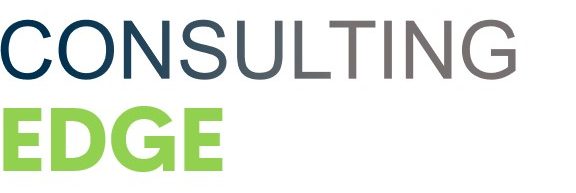A Project Assumption is an assumption that is made about the project. Project assumptions are often not identified or documented in a formal manner, which can lead to confusion and disagreement later on in the project.
Project assumptions are the things that you take for granted about a project. These can often prevent projects from getting off the ground because of unrealistic expectations.
In this blog post, we’ll discuss 5 tips on how to identify your project assumptions. So you can create realistic expectations and set up your business for success.
What is Project Assumption?
Project assumption is basically a statement that you assume to be true at the beginning of the project. Project assumptions are different from Project Objectives, Project Constraints and Project Boundaries. Because they can change during the course of execution.
These assumptions help us identify risks early in the process. Since we don’t want our business plan or strategy failing due to any issue. The Project Managers must keep a close eye on Project assumptions.
Project Assumptions: The Proven Tips
Project Assumption is an assumption about the project that can be true or false. You can use them during Project Planning to create Project Baseline (the current plan).
Here are five tips on how you can make your Project Assumptions realistic and accurate:
Analyze the Past Projects:
Project is often made with the assumption of past Project Baseline. To make Project Assumptions realistic, you need to analyze how accurate were your past Project Baselines.
The Project Assumptions should be based on the Project History and Project Plans. It is important to know what worked well in your previous projects and which areas you need improvement such as:
- The Technology used
- Project Scope
- Project Duration/Schedule
Identify Objectives that must be met: Know the goals of the project, identify what objectives are most critical. Since they will have a significant impact on how Project Baseline can differ from forecasted project completion date.
Your objective may include any combination of these factors;
- Time
- Resources
- Quality
- Risk
Talk to stakeholders to know their expectations:
Project Assumptions should be realistic and not just based on your assumptions. Project stakeholders need project assumptions to be realistic as well. Talk to Project Stakeholders such as the Project Sponsor about their expectations of the project outcome.
They could provide you with Project Baseline information that will help improve the Project Assumptions. Also, they can give their opinion on why some of your assumptions are too optimistic or pessimistic. This will be very helpful in making Project Baselines better for future projects.
Once you have talked with stakeholders, compile a list of all possible Project Assumptions that may affect the expected outcome.
Review your compiled list and sort them in order from most critical to least important. Prioritize which factors are more likely to happen during the project. So it will help you know what needs attention first if there is any deviation from the initial plan.
Create a realistic timeframe for Project:
The Assumptions can be developed based on Project History and Project Plans. But the most important factor is to know how long it will take for each task of Project Baseline. It is not just with hours but also days or weeks depending on your project type such as:
- Construction Projects
- Software Development Projects
- Product Manufacturing Projects
- Testing Project Phases (Alpha Testing, Beta testing) etc.
Once you have identified realistic timescales for each activity during Project Planning. Then, you can create a detailed milestone chart so you can track progress more easily.
Afterwards, use this information to come up with dates that are expected by different stakeholders including yourself. This will makes the static schedule less critical than ever before.
Determine risk tolerance level:
Project Assumptions will not be accurate if Project Scope and Project Duration are highly uncertain. To develop Project Assumptions, you need to know your risk tolerance level. You must know how much flexibility would the project have if something goes wrong at different points?
If there is too high of a risk for any deviation from Project Baseline. Then it’s not realistic and more likely that Project Stakeholders will start questioning resource availability or budget constraints.
You need to determine how much risk your project team can handle during the project before you create Project Baseline. This is important so you know what assumptions can affect the outcome of your project.
For example, a software development company may choose to add more features than initially planned. Because they expect all efforts will go well without any problems or delays. But in reality that might not happen with certain high-risk activities such as programming languages used etc.
So it’s better for this type of company to make an assumption about adding additional features after Beta Testing. Since there would be less chance for deviation from Project Baseline.
Communicate with Team Members regularly:
It is not just Project Stakeholders that need to be informed about Project Assumptions. The Project Team must know what assumptions are made as well so they can work more efficiently and effectively.
Project Managers should communicate regularly with the Project Team members. They have communicated regularly during Project Execution Stage through one-on-one meetings or project team meetings etc.
You should have to review every Project Assumption you create with your Project Team. It is important to share all assumptions so everyone can contribute feedback on how realistic they are.
This will help in keeping the entire team more engaged and committed. Since Project Baselines allow for changes during project execution if needed.
Benefits of Project Assumptions:
The Project Assumptions technique will let Project Managers keep their projects flexible and adaptable to changing circumstances. It is not just good for only Project Stakeholders but also the entire project team members in terms of motivation and productivity.
Project Managers can easily modify Project Baselines during Project Execution Stage.
Project Assumptions creation usually after Project Planning but they remain dynamic throughout the project lifecycle by using Project Budgets and Resources to meet business needs.
This is a powerful way of looking at projects from various angles as well as making more realistic assumptions for each activity within your timeline etc.
Conclusion:
Project assumptions provide project managers with an opportunity to define Project Baselines. Project stakeholders can be more involved during the process so they feel confident about the project outcome.
This also helps create realistic expectations by identifying risk tolerance levels and defining the flexibility for changes. If something goes wrong at different points along the way.






